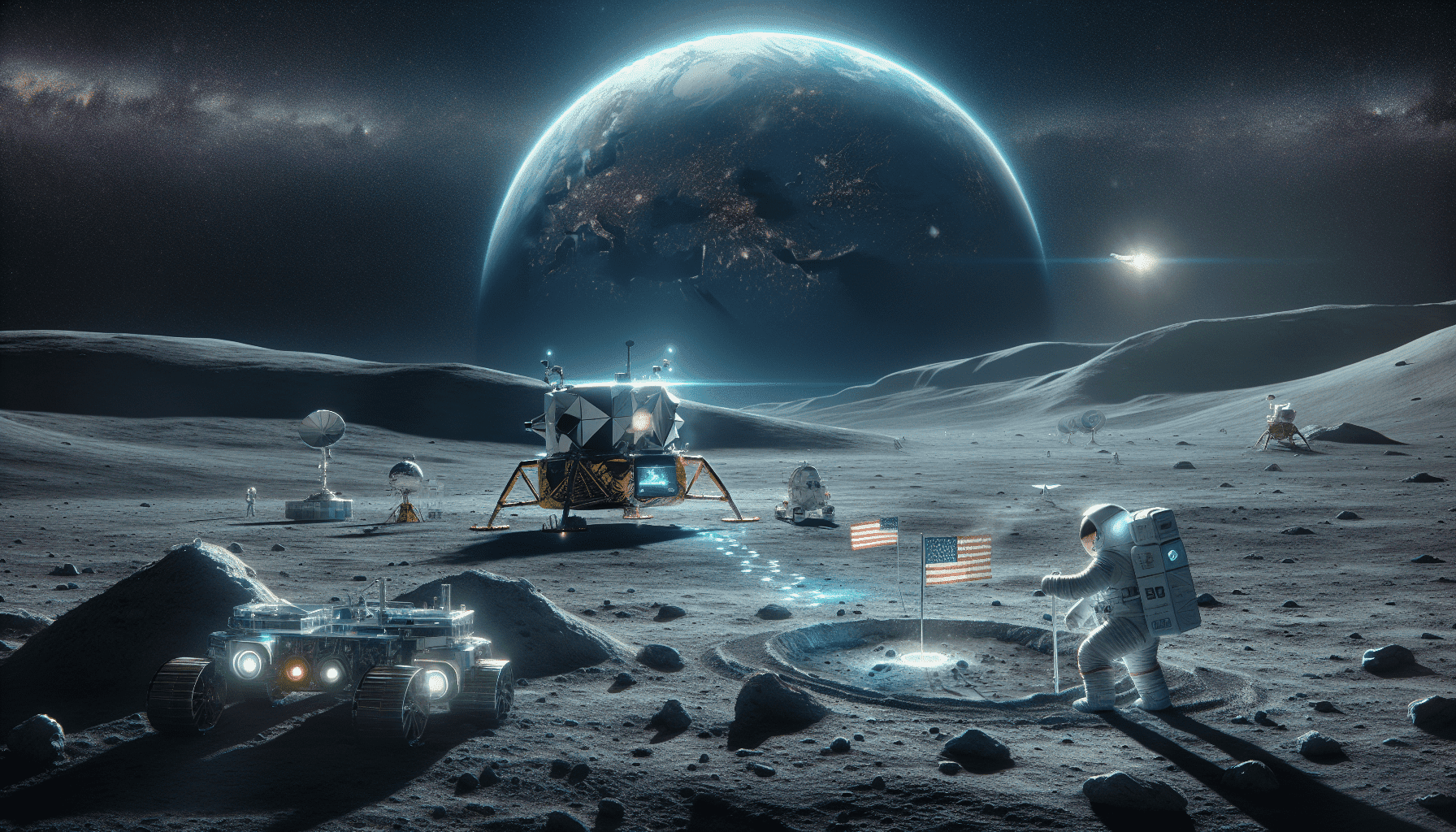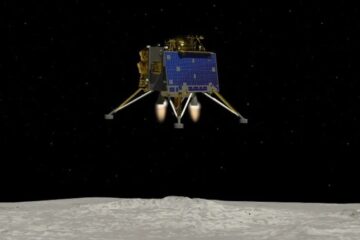As humanity looks to the stars once again, NASA’s Artemis 2024 Mission is rekindling the spirit of lunar exploration. This ambitious initiative aims to land astronauts on the moon by 2024, marking a significant milestone since the Apollo missions of the 1960s and 1970s. The Artemis 2024 Mission represents a new era in space exploration, combining cutting-edge technology with valuable lessons learned from previous lunar missions.
The Artemis 2024 Mission has far-reaching implications for scientific discovery, technological innovation, and international cooperation. This article delves into the key aspects of NASA’s moon mission 2024, examining the technological advancements that make it possible, the challenges faced by the team, and the potential impact of establishing a sustainable presence on the lunar surface. From Artemis II to Artemis III and beyond, we’ll explore how this program is shaping the future of space exploration and paving the way for human missions to Mars.
Artemis 2024 Mission Goals and Objectives
The Artemis 2024 Mission, led by NASA, aims to reestablish human presence on the Moon and pave the way for future Mars missions. Its primary objectives include landing the first woman and person of color on the lunar surface, exploring more of the Moon than ever before, and fostering scientific discovery and economic growth. The program seeks to inspire a new generation of explorers while maintaining American leadership in space exploration.
Mission Timeline
NASA has outlined a series of Artemis missions, each increasing in complexity:
- Artemis 1 (2022): Successful uncrewed test flight of SLS and Orion.
- Artemis 2 (2025): First crewed test flight around the Moon.
- Artemis 3 (2026): First crewed lunar landing since Apollo 17.
- Artemis 4 (2028): Second crewed landing and Gateway station integration.
- Artemis 5 (2030): Third crewed landing and additional Gateway components.
Key Components of the Artemis 2024 Mission
The Artemis 2024 Mission relies on several crucial elements:
- Space Launch System (SLS): The most powerful rocket in the world.
- Orion spacecraft: Designed to carry astronauts to lunar orbit and back.
- Human Landing System (HLS): Developed by SpaceX for lunar surface missions.
- Gateway: A lunar orbital station for extended missions and scientific research.
- Artemis Base Camp: Planned lunar surface facilities for long-term exploration.
Technological Advancements in NASA’s Artemis 2024 Mission
The Artemis 2024 Mission relies on cutting-edge technologies to achieve its ambitious goals. The Space Launch System (SLS), the most powerful rocket in the world, serves as the foundation for deep space missions. Orion, the spacecraft designed for crewed lunar missions, provides essential life support and protection during the journey.
The Human Landing System (HLS), developed by SpaceX, will transport astronauts from lunar orbit to the surface. The Lunar Gateway, a multi-purpose outpost orbiting the Moon, will support long-term human presence and facilitate deep space exploration. These technological marvels work together to enable NASA’s vision of returning humans to the Moon and paving the way for future Mars missions.
Challenges and Solutions
Technical Hurdles
NASA faces significant technical challenges in the Artemis 2024 Mission. Issues with battery and circuitry components responsible for air ventilation and temperature control have emerged during testing, requiring additional time to resolve. These setbacks have led to schedule adjustments for Artemis missions, allowing NASA to incorporate lessons learned from each mission into subsequent ones.
Budget Constraints
The Artemis 2024 Mission faces substantial budget pressures. NASA’s projected costs for Artemis are estimated to reach $93 billion between 2012 and 2025, with each launch of the Space Launch System (SLS) and Orion spacecraft costing approximately $4.2 billion for the first four missions. Cost-reduction efforts may fall short due to NASA not capturing certain costs or relying on unrealistic assumptions.
International Cooperation
To address challenges, NASA is fostering international partnerships. The Artemis Accords promote peaceful space exploration, transparency, and interoperability of systems. These agreements also emphasize emergency assistance, scientific data sharing, and the protection of historic sites. However, NASA’s current plan lacks cost estimates for international partners beyond the fourth phase of the Artemis project.
Conclusion:
The Artemis 2024 Mission represents a significant leap forward in space exploration, blending cutting-edge technology with international cooperation to achieve ambitious goals. NASA’s plan to return humans to the Moon and establish a sustainable presence has an influence on scientific discovery, technological innovation, and our understanding of deep space environments. The program’s focus on diversity and inclusion, coupled with its potential to inspire a new generation of explorers, highlights its importance beyond mere scientific achievements.
As NASA works to overcome technical hurdles and budget constraints, the Artemis 2024 Mission continues to push the boundaries of what’s possible in space exploration. The development of advanced systems like the SLS, Orion spacecraft, and lunar Gateway paves the way for future missions to Mars and beyond. With ongoing international partnerships and a commitment to peaceful space exploration, the Artemis 2024 Mission is set to usher in a new era of human presence in space, potentially changing our perspective on Earth and our place in the cosmos.
FAQs
- Is there a scheduled moon landing coming up?
Yes, the next scheduled moon landing is set for no earlier than September 2025. Artemis 3, planned for 2026, aims to be the first American crewed lunar landing since Apollo 17 in December 1972. - What is the purpose of NASA’s moon landing in 2024?
NASA’s Artemis 2 mission, slated for 2024, will send astronauts on a lunar flyby, marking the first time astronauts will orbit the moon in nearly 50 years. This mission will involve four astronauts traveling around the moon aboard an Orion spacecraft, which will be launched using a Space Launch System rocket. - Why is NASA aiming to return to the Moon with the Artemis 2024 Mission?
NASA’s Artemis 2024 Mission is designed to advance scientific discovery, technological innovation, and our understanding of how to live and work on another celestial body, in preparation for future human missions to Mars. The program will also involve collaborations with commercial and international partners to establish a long-term presence on the Moon. - Does NASA have plans to construct a base on the Moon?
Yes, NASA plans to establish the Artemis Base Camp on the Moon’s surface and the Gateway in lunar orbit. These installations will enhance the capabilities of both robots and astronauts to explore the Moon more extensively and conduct unprecedented scientific research.




